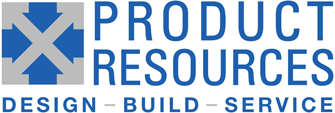Whether built in a Batch or a Cell process, the flow is similar.
First, the documentation required for the build is displayed on a computer at the workstation or cell. When the job is released for assembly, a packet of information is generated and placed on our network for use by assembly personnel. Some information is released in a PDF format, and other information is obtained by a link in the released information. This information includes:
- Routing – the listing of Operations, the Material required in those operations, and any Assembly Notes that are necessary.
- Assembly Drawing – a graphic representation of the assembly, with as many sheets or steps necessary to guide the assembler through the process.
- Assembly Procedures – sometimes an Assembly Drawing does not have enough detail on how to build the assembly. In those cases, the drawings are augmented by procedures. These procedures can be text only or have photographs for clarity.
- From links embedded in the Routing, any drawing associated with the assembly can be opened directly from Document Control (e.g., schematics, machined part drawings, datasheets).
It should be noted here that these documents are all controlled through our ERP and QMS systems to ensure that the proper information is linked to the proper assembly at the proper build revision. Our document control process handles Routing and documentation changes.
Next, the assembly begins with the first operation in the Routing and the personnel assigned to the task depends on the type of assembly. For straightforward mechanical assembly, any of several personnel are qualified and trained on how to assemble electro-mechanical assemblies properly. If there are specialized skills required (e.g., point-to-point wiring, crimping, soldering, alignment, calibration), then personnel assigned will have those skills.
Once the first operation is complete, the assembly can move on to other stages of assembly, possibly at other workstations. There are general workstations for mechanical assembly and electrical assembly, and specialized workstations for potting, welding (e.g., battery tabs), vacuum baking, pressing, functional test, calibration, stress screening, ground bond and Hi-pot testing, etc. By utilizing our general and specialized workstations, and our ERP system to schedule work through those workstations, we can build a wide range of products without reinventing the manufacturing plant each time.
The Cell Build process is the same as described above, except that the general and specialized workstations are all located within the work cell and not shared with other assemblies.
These operations continue until the assembly is built, tested, and passed QA release. At that point the assembly is sent back to the stockroom until needed for use on another assembly or shipped.
